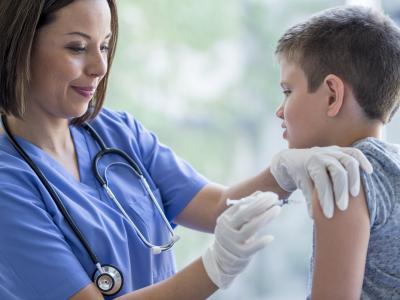Third MERS case recorded in Qassim region of Saudi Arabia
Saudi Arabia's Ministry of Health (MOH) today reported a new MERS case for epidemiologic week 46 in the Qassim region.
The patient is a 67-year-old man hospitalized for his infection with MERS-CoV (Middle East respiratory syndrome coronavirus). He had no contact with camels, and the source of his infection is listed as "primary, community acquired."
Last week, in epidemiologic week 45, the MOH recorded two cases of MERS in the same region, which is in central Saudi Arabia.
The new case raises the global number of MERS-CoV infections reported since 2012 to 2,266, at least 803 of them fatal.
Nov 13 MOH update
UK case series highlights serious AFM disease tied to enterovirus D68
Reports of acute flaccid myelitis (AFM) cases with suspected links to enterovirus D68 (EV-D68) have been rare outside of the United States, but researchers from Scotland yesterday reported on five AFM cases following EV-D68 illness, one of the largest clusters of its kind to be reported from Europe. The team reported its findings and 18-month follow-up of the children in Developmental Medicine and Child Neurology.
The patients were children ages 2 to 6 from southeast Scotland whose AFM symptoms began within a 2-week period during September and October of 2016. Lab tests had revealed EV-D68 in nasopharyngeal samples. All patients had significant neurologic symptoms, which were severe in two children who needed intensive care unit case due to respiratory paralysis. Families were questioned about a wide range of exposures the children may have had in the 4 weeks before AFM symptom onset. Diagnostic work-up also included brain and spine magnetic resonance imaging, electrophysiologic studies, and cerebrospinal fluid testing.
No clear common environmental exposure was found, and when the researchers looked for risk factors by comparing cluster patients with peers who had been sick with EV-D68 and didn't develop AFM, the only difference they found was that the AFM kids were much younger.
After 18 months, two children needed ventilator support and the others required rehabilitation, though all children could walk, talk, and eat with varying levels of persistent neurologic defects. The authors said a coordinated global response is needed to understand and prevent EV-D68 infections and their potentially severe consequences.
Nov 12 Dev Med Child Neurol abstract
In a related paper, researchers from the Netherlands today published a review article on EV-D68, noting that studies showing its neurotropic nature and change in pathogenicity has established it as a probable cause of AFM.
"The EV-D68 storyline shows many similarities with poliovirus a century ago, stimulating discussion whether EV-D68 could be ascertaining itself as the 'new polio,' " they wrote.
Numbers of EV-D68 and AFM cases have increased this fall and include two in the Netherlands, which has been communicated to a network of virologists and clinicians who collaborated during the 2014 and 2016 outbreaks, the group said. Integrating EV-D68 into surveillance systems already established for poliovirus would help experts understand the true burden of the disease and prepare hospitals and labs for upcoming outbreaks, and awareness efforts should target clinicians and hospitals, the group suggests.
Nov 13 Front Microbiol abstract
Local health departments join the AMR Challenge
To mark US Antibiotic Awareness Week, the National Association of County and City Health Officials (NACCHO) today announced a commitment to support the Antimicrobial Resistance (AMR) Challenge, a year-long initiative led by the US Department of Health and Human Services and the Centers for Disease Control and Prevention.
Organization officials say local health departments can help in the fight against AMR by investigating reportable diseases and unusual resistance, promoting containment strategies to reduce the spread of disease, and collecting and analyzing data to identify outbreaks, monitor trends, and target prevention efforts.
"As a partner of the AMR Challenge, NACCHO aims to increase awareness and engagement of local health departments in activities related to preventing and controlling antimicrobial resistance; promote the critical role of local health departments in protecting their communities from antimicrobial resistance-related threats; and facilitate opportunities for local health departments to identify local-level commitments in support of the AMR Challenge," NACCHO CEO Lori Tremmel Freeman said in a press release.
The challenge, launched in September, calls on public- and private-sector organizations around the world to make at least one commitment in one of five areas: improving antibiotic use in humans and animals; reducing antibiotics and resistant bacteria in the environment; developing new antibiotics, vaccines, and diagnostics; enhancing data collection and sharing; and improving infection prevention and control.
NACCHO represents the nation's nearly 3,000 local health departments.
Nov 13 NACCHO press release
Sep 26 CIDRAP News story "HHS, CDC issue AMR 'challenge' to public, private sectors"
Oseltamivir tied to higher rate of adverse psychiatric events in Korea
A population-based case-crossover study in South Korea published yesterday in the Journal of Antimicrobial Chemotherapy has shown that short-term use of the flu antiviral drug oseltamivir (Tamiflu) is associated with an elevated risk of adverse neuropsychiatric events.
Some data have tied oseltamivir use to psychiatric symptoms, especially in Japan, but few data outside of case reports exist about Korean patients. A study earlier this year did not find a connection when investigators analyzed data from a nationwide US claims database.
In the new study, researchers identified 5,322 patients who had a prescription for oseltamivir from 2009 through 2013 out of 236,348 patients who had neuropsychiatric adverse events (NPAEs) as either a primary or secondary diagnosis. The investigators assessed the patients' exposure to oseltamivir before NPAE onset.
Their analysis of data for the cases and matched controls found a 90% higher risk of NPAEs in those who had taken oseltamivir in the previous 2 days (adjusted odds ratio [aOR], 1.90). That compares with a 1.32 aOR for the 7-day hazard period, 1.28 aOR for 14-day, 1.25 aOR for 28-day, and a statistically not significant 1.13 aOR for the 56-day hazard period.
The authors conclude, "Early monitoring of NPAEs may be required when prescribing oseltamivir, with careful consideration of the risk–benefit balance of oseltamivir."
Nov 12 J Antimicrob Chemother study













